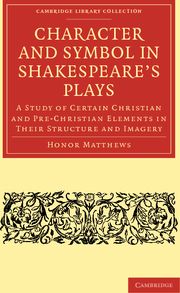 Character and Symbol in Shakespeare's Plays
Character and Symbol in Shakespeare's Plays Summary
In the belief that it is now possible to accept Elizabethan drama in terms of both individual characterisation and universal symbolism, this book studies certain symbolic elements which recur persistently in Shakespeare's work. Their cumulative impact, after they have been traced in successive plays, enforces the conclusion that they do reveal something of the dramatist's own values and attitudes and hence offer an indispensable clue to the interpretation of his work. As the symbols are traditional, the reader is asked patiently to become familiar with them in their earlier forms—or to revive his memory of these—before going on to examine their use by Shakespeare. Such a review involves a slow start to our survey, but it will be rewarded, it is hoped, by a clearer and more confident awareness of Shakespeare's motives and methods.
It is impossible to name here all those to whom the author is indebted for much of her own delight in the plays. She gratefully acknowledges the help of the many editors and critics who have opened new paths of study and developed new sensibilities for the present generation. She also owes much to the men and women who have presented the plays in the professional theatre. In especial she would wish to thank Sir John Gielgud for those memorable performances of King Lear which demonstrated once and for all that tension between the particular and the universal which she has come to believe represents Shakespeare's own purpose and unique achievement.
- Type
- Chapter
- Information
- Character and Symbol in Shakespeare's PlaysA Study of Certain Christian and Pre-Christian Elements in Their Structure and Imagery, pp. v - viPublisher: Cambridge University PressPrint publication year: 2009First published in: 1962
